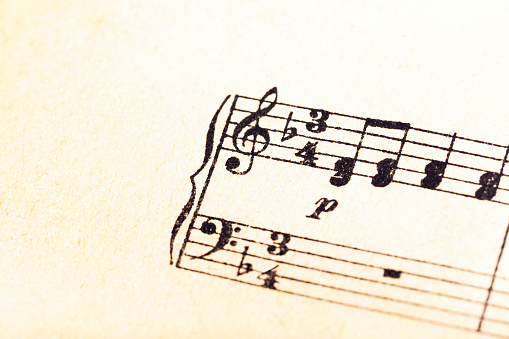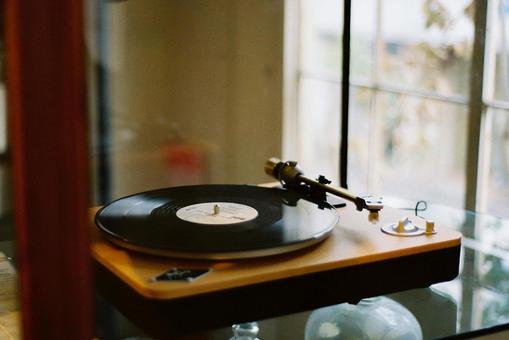BLOG
[Permanent] Teaches you how to read transposed notation!
Oct 25, 2022

Biiiiiiiiiiiiiiiiiiiiiiiiiiiiiiiiiiiiiiiiiiiiiiiiiin!
That clarinet, even though the sheet music says "Do", I hear a "C" flat!
Those with absolute pitch will notice.
That's right!
When playing the clarinet, saxophone, or horn,
different reading from the so-called G clef and F clef in the piano.
The notated notes (i.e., the notes written in the score) and the actual notes (the notes actually played) are notated at regular intervals.
This is called transposition!
For example, see ・・・・・・,
Clarinet: Notated note "Do" = real note "C" (real note is 2 degrees lower than the notated note)
For horn: Notated d = real f (real note is a perfect 5 degrees lower than the notated note).
This is different from the G clef used on the piano.
Therefore, if you have played an instrument like the piano, where the notated note and the real note are the same, when you encounter transposed notation, you may not be able to play the same note as in the piano,
If you have been playing a transposed instrument like piano, you may be confused when you encounter transposed notation!
This time, for those who have read music and played the piano for a while but are not good at transposing scores, I'll explain how to play transposed scores. fuchsia;">how to read transposed notation.
◆2 degrees down shift in B (in B).
Like the clarinet mentioned above, it sounds two major degrees below the written note (one note lower).
This includes soprano saxophones, tenor saxophones, and clarinets in B.
In addition to this, the tenor notation used by the cello to play the higher notes also has the same displacement.
◆5 degrees down in F (in F)
The written note is played a full 5 degrees below (4 tones below). It is only used in horns (and other instruments such as chor anglais (・・・・)).
The horn instrument is used in all kinds of music, both old and new.
Therefore, every professional teacher must be able to read.
◆Same as the clef because it shifts up 3 degrees
in Es in E
The in Es or in E, which shifts up three degrees (two notes), is no different from the "clef" used on the piano (the range varies).
It is used on alto saxophones, Es wind clarinets, and some other wind instruments.
◆◆in D (in D), which shifts up two degrees.
Used on viola as an alto notation. On the viola, it is not called In D, but rather the C clef.
It is played an octave below the notated note and two degrees above (one note higher).
Other instruments, such as horns and some trumpets, use in D.
This is... it will take me quite a while to understand it all.
***************************************
From here, I would like to give some trivia about transposed notation.
◆What if the transposition does not go smoothly?
1) In advance, re-write the parts of the performance that are difficult to read in a notation that you can read (G clef).
When you encounter irregular notation on a brass instrument, this method will save the day.
This way, I can pretend that I understand all the parts of the piece.
As much as possible, speed up the conversion with real sounds so that it does not interfere with performance and communication.
Some teachers and conductors may use this technique to fake bad hearing (^-^;
What is a useful way to remember the various sax transpositions?
Chant "be-es-be-es."
Soprano B flat (vee) Alto E flat (es)
Tenor B-flat (vee) Baritone E-flat (es)
◆Which composers have the most difficult transposed scores?
Wagner!
Just reading the score makes my head spin.
For example, suddenly there is an instruction to read in G (in G) in the horn part. Of course, we don't usually read in that way.
Furthermore, the in G part, which rarely appears in the score, and the other horns (not in F, but in D ?!!) in the score sound at the same time. ), which rarely appears, sound at the same time.
Conductors and teachers must visualize the sound with their minds, no matter how unreasonable the score may be.
In other words, just reading the score forces you to fight against your own solfege ability.
If you think, "I don't need to read scores, I just need to know my part...", you are wise if you are not aiming to become a professional.
◆Conclusion.
How well should you be able to read transposed notation?
It depends on your position, whether you are a professional or an amateur, a conductor or a performer, a composer, etc. The level required varies.
The important thing is not how to read transposed notation, but to use it in your music.
Don't be afraid of transposed notation, but play beautiful music!
◆Supplementation.
The online music lesson "Lesson Grid" has a music notation display function.
It is also possible to instruct how to read sheet music.
Would you like to learn how to read music correctly? Would you like to learn from a professional performer?
Please feel free to apply for a trial lesson.


